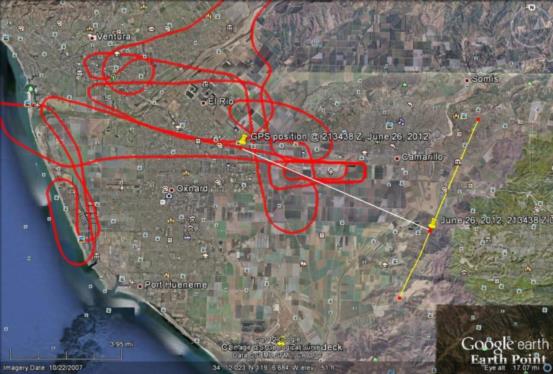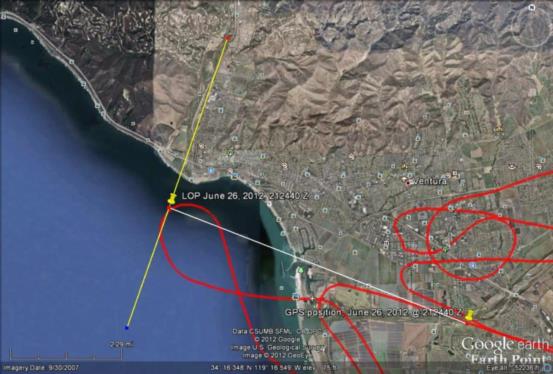
NavList:
A Community Devoted to the Preservation and Practice of Celestial Navigation and Other Methods of Traditional Wayfinding
Moon observations in flight
From: Gary LaPook
Date: 2012 Jun 28, 13:25 -0700
From: Gary LaPook
Date: 2012 Jun 28, 13:25 -0700
| I went flying on Tuesday and one of my purposes was to take some celestial observations. I chose the
day so that the sun and moon would be properly placed to allow getting a
fix, unfortunately I didn't allow for the sun being so high, 79°, and
the overhead prevented getting any sun shots. I did take two
observations of the moon, one each with the MA-2 and the A-7 bubble
octants. I took ten shots with the A-7 and the average altitude was
17°54' which produced an intercept of 5.7 NM away. I did a two minute
average with the MA-2 and the altitude was 20° 00' which produced an
intercept of 6.4 NM toward. I'm pretty happy with these results because keeping the plane in steady flight is critical for accuracy and I was flying solo without an autopilot so I had to level the wings, line up the moon in the octant for a few seconds, check to see if the wings were still level and straighten them up if necessary, observe the moon for a few more seconds, repeat... plus there is always the problem using the moon when it is not full since you have to estimate where the center of the moon should be and place that in the center of the octant's bubble. So 6 NM accuracy with all those impediments which is within the expected 7 NM uncertainty of bubble octant observations taken in flight was quite satisfying. See the attached plots. The red line is the track of my plane as recorded by my GPS. gl |








